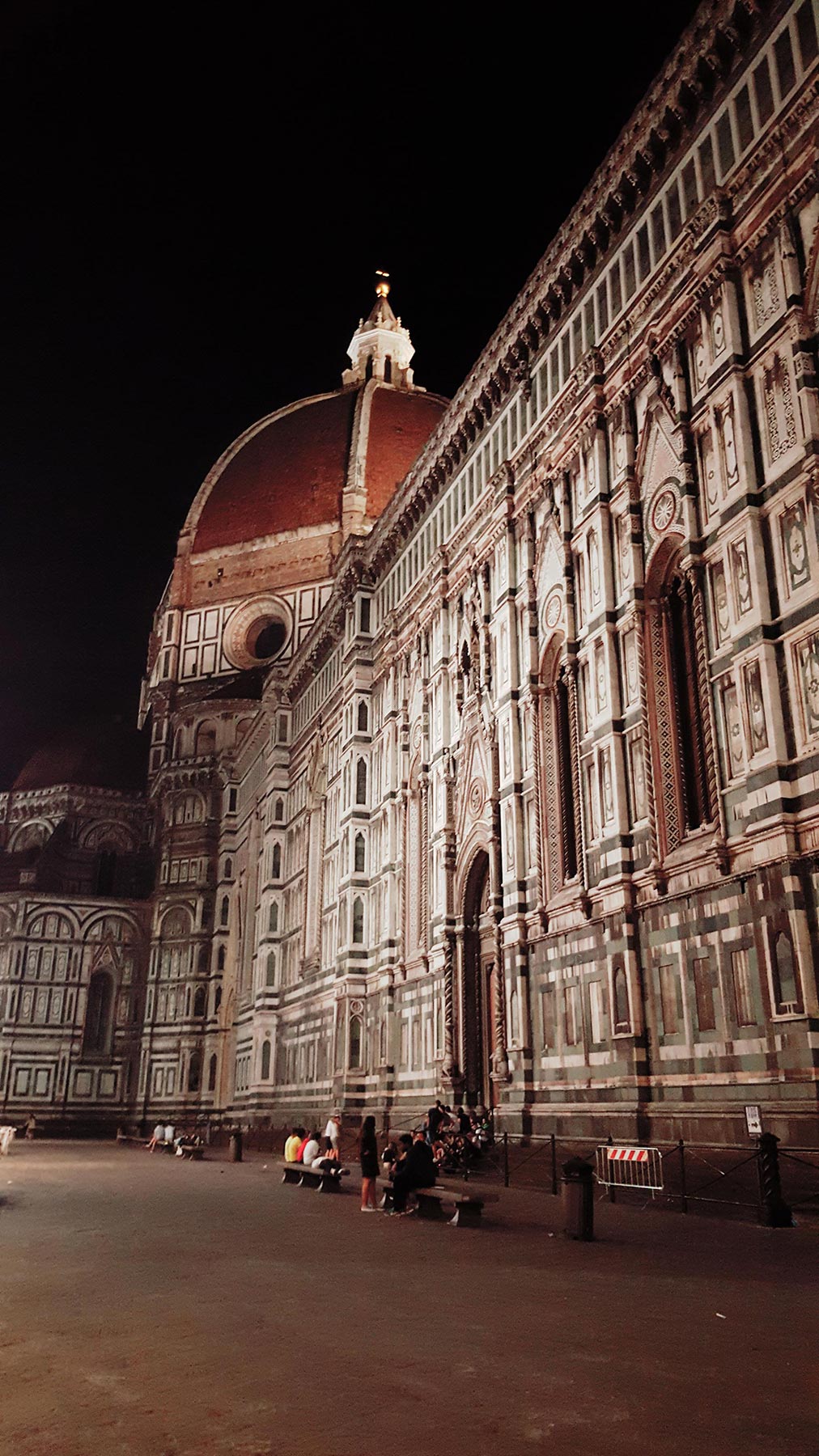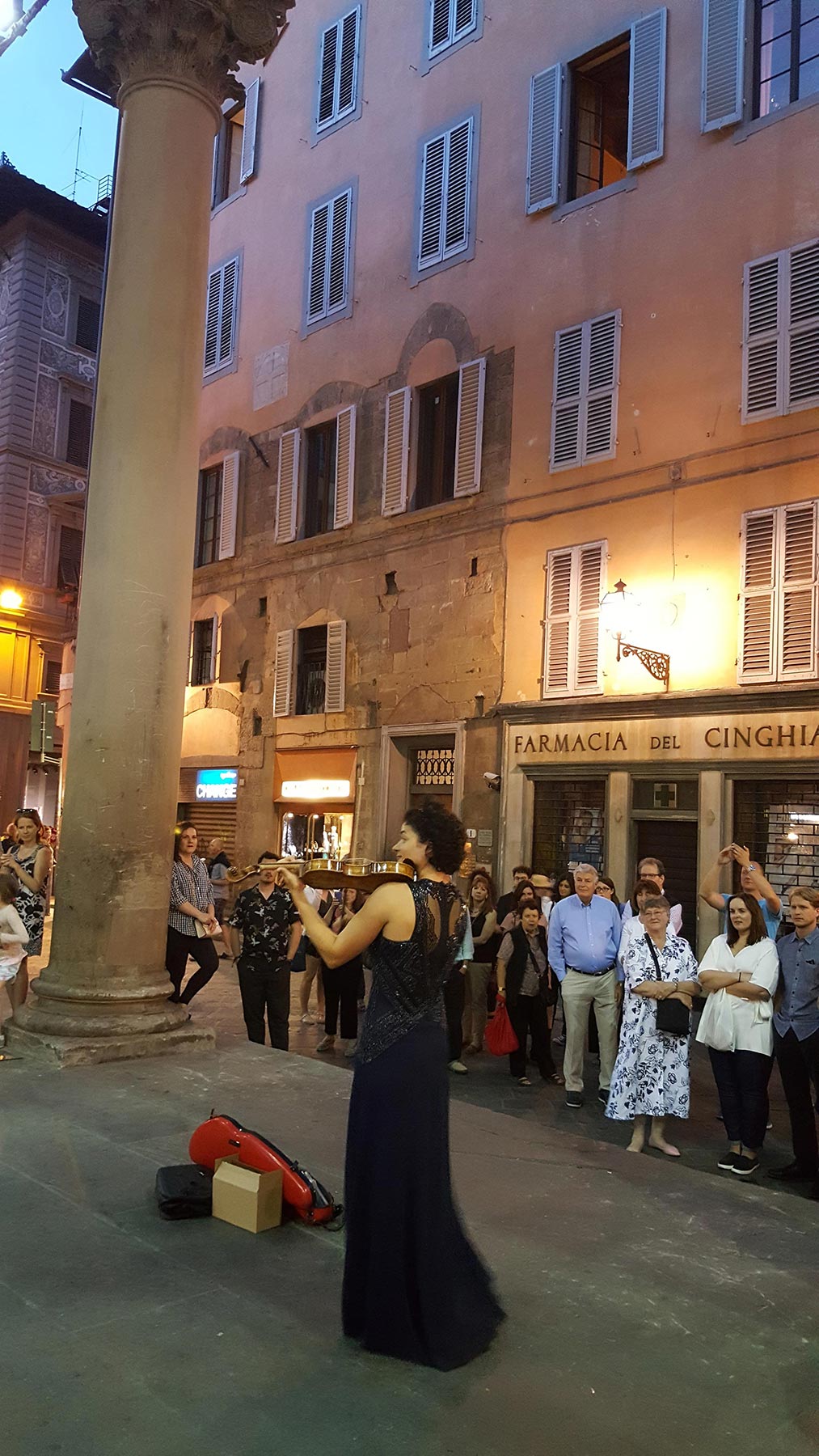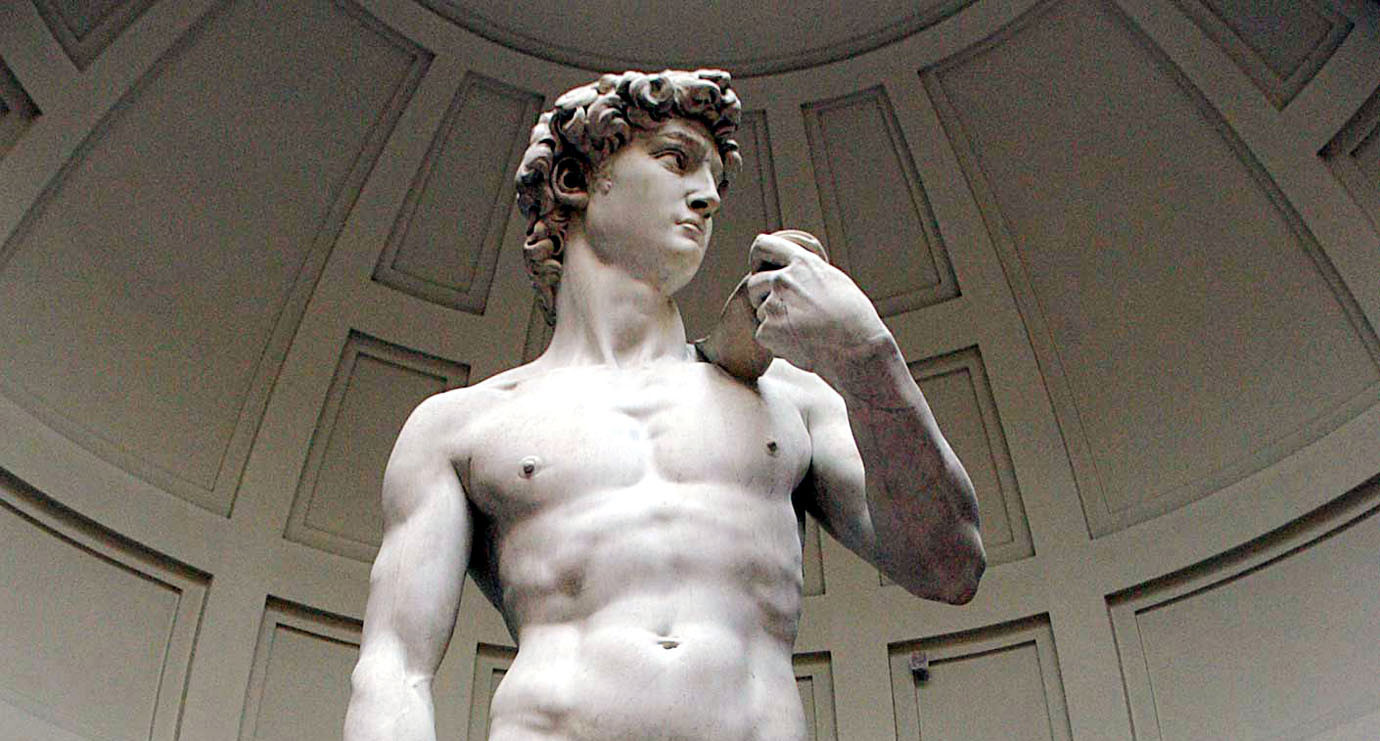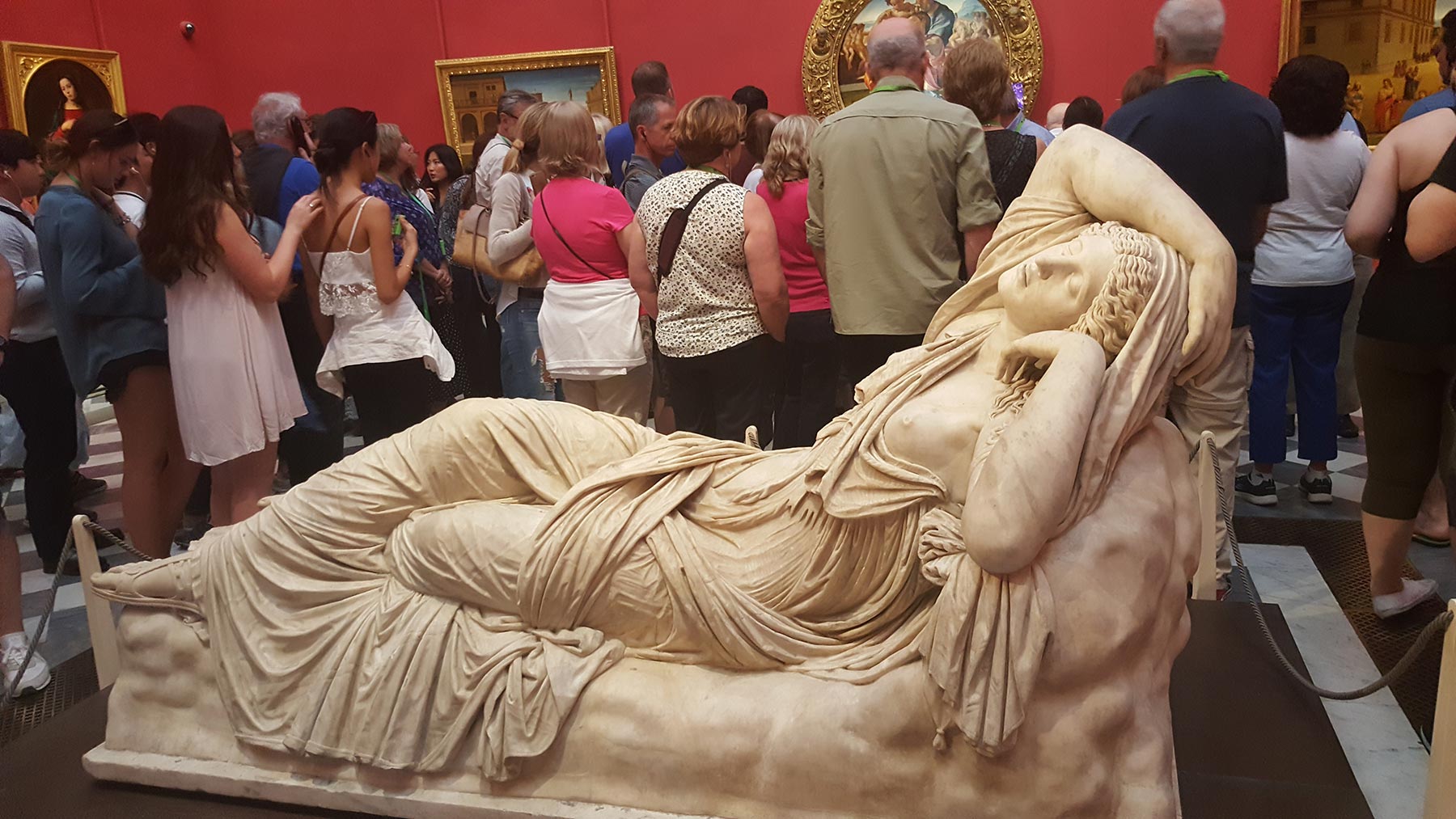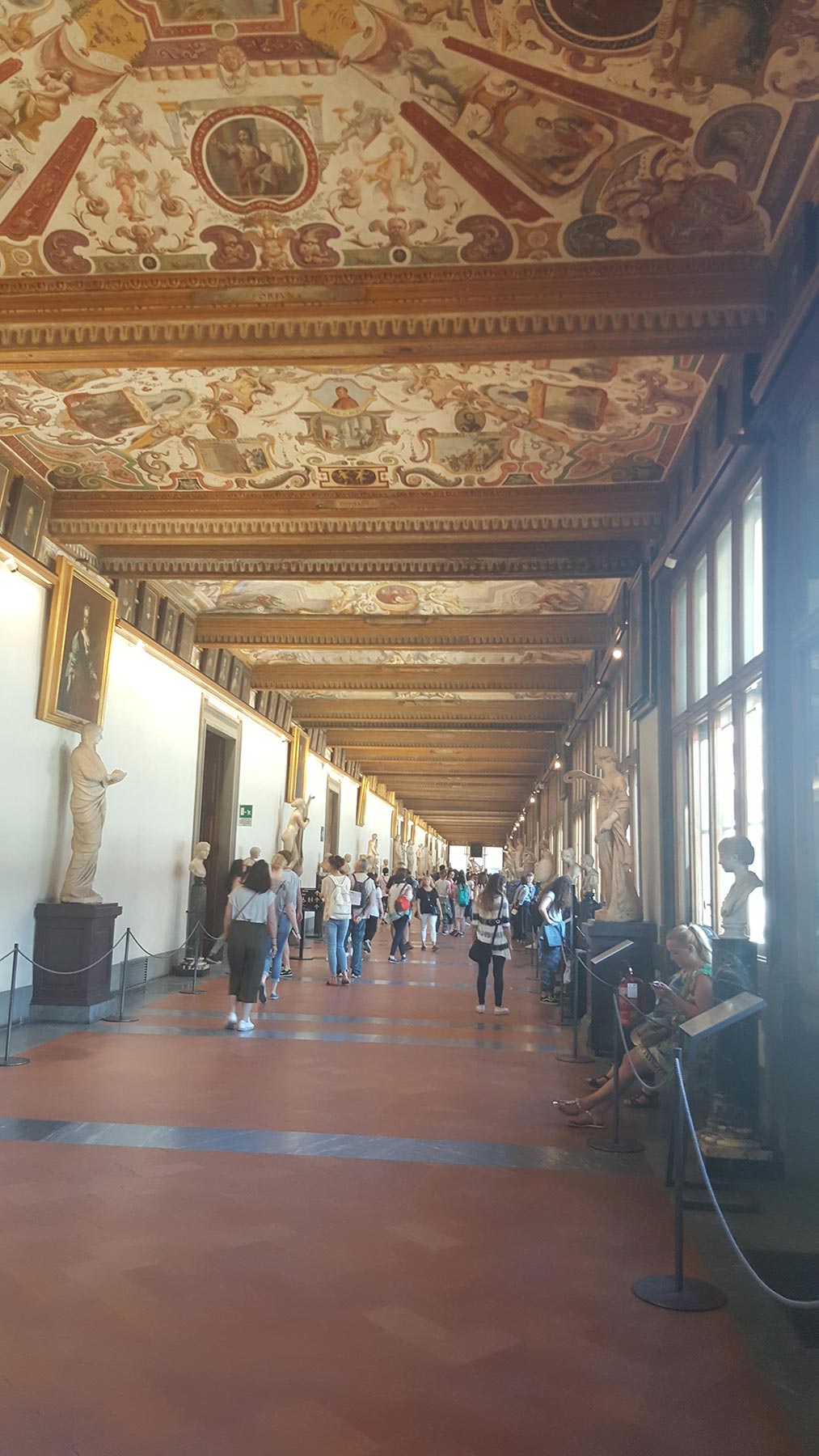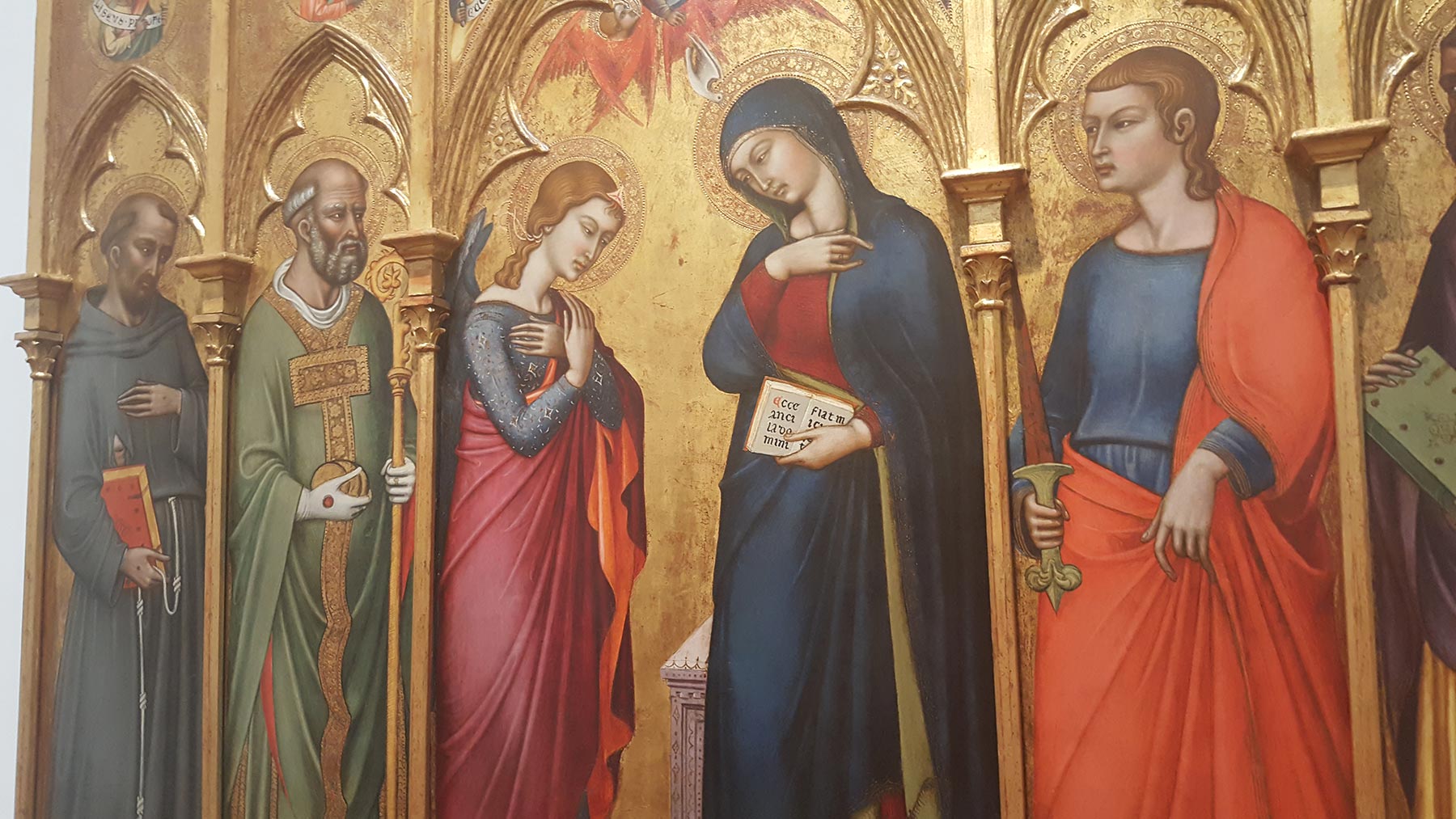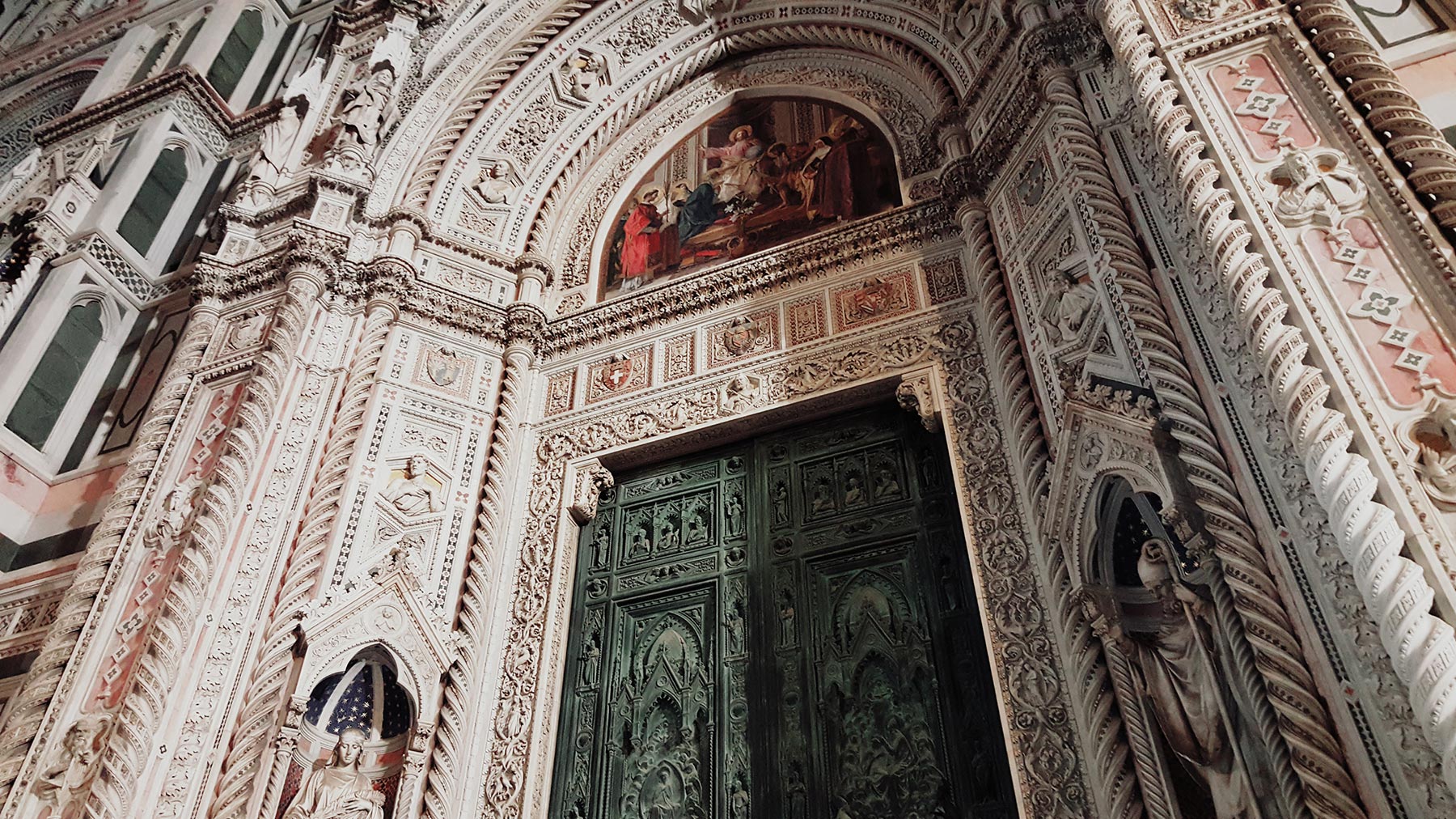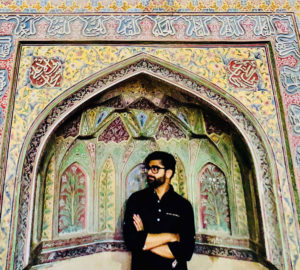Leading journalist and media producer Fifi Haroon visits Florence, the Best City in Europe according to the Travel+Leisure Awards for 2017, where she meets the most desired man in the world – Michelangelo’s David. As she feasts on a treasure trove of Renaissance art and architecture, Italian high fashion and Florentine delicacies, she can’t help but fall in love with the Tuscan capital.
It was the best of vacations and the worst of vacations.
I arrived at Florence’s tiny Peretola airport to a double-whammy. My suitcase it would seem had proven reluctant to leave London and the Florentine shops in the centre of town had closed their doors for the night. The weather was hot and clammy, and my temper was far from temperate. The lost luggage department at Peretola was run by a man with a hard heart and little empathy for my predicament. Not the most propitious way you would say to start a 3-day trip to the Tuscan capital that was meant to be my birthday present to my older self.
And then it happened. That moment when Italy reaches out and encloses you in sweet embrace and you feel you belong, that somehow all this Renaissance of beauty has been keeping itself intact for centuries just for you. Past the squareness of Piazza della Republica which was once the site of the Roman forum, through the narrow, cobbled Florentine lanes I heard a distant sound; a few errant strains of a violin playing a siren song. I turned a corner, and there in the fading light of the evening, amidst the lofty columns of the Mercato del Porellino, was an impossibly elegant street busker in a floor-length black gown, playing a sonata for an impromptu street audience. We were all, it would seem, feeling that first flush of romance with Florence; the city was already tugging at the heart-strings despite my weary traveller feet. I am not sure anyone can remain unhappy in this “open-air museum of a city” as its official website aptly describes it, for too long. “You may have the universe if I may have Italy,” the opera composer Giuseppe Verdi is known to have said in unabashedly patriotic prose.
And in that charmed moment, when despair turned to delight, I was inclined to agree.
Love is everywhere in Florence to the extent that falling into it in the city has become a sort of cliché. It was Florence which provided the picturesque backdrop to the romantic awakening of Lucy Honeychurch (Helena Bonham Carter) in James Ivory’s adaptation of E.M. Forster’s coming of age novel, A Room with a View. The film which probably launched a thousand romances in the 90s is a paean to Florence’s centro storico and the Italian-ness of emotions, which overwhelms the young English woman so much that she faints into the arms of the handsome George Emerson after witnessing a rowdy fight on Florence’s streets.
If you are looking for similarly irresistible eye-candy, you don’t have to look far. Welcome to the most desired man in the world – in stone that is. The biblical hero David stands tall at the Galleria dell’ Academia, where hundreds queue up around the block to see his famous nakedness and almost incidental slingshot for his impending tussle with Goliath. He might look well-toned but the most famous statue in the world isn’t a lightweight. He looms approximately five meters tall and weighs over five tonnes. Then only 26, the artist Michelangelo Buaornatti won the commission over artists such as Leonardo da Vinci to carve him out of a single gigantic block of Carrera marble thought to be veined and imperfect by many of his contemporaries. “Just look at that six-pack!” gushed a pushy woman as she brushed me aside en route to a closer view to the statue. What she missed in that fan-girl sprint were probably the most poignant artefacts in the hall. The moving St Matthew and four “Priogioni” (Prisoners or Slaves), also by Michaelangelo, were meant for the tomb of Pope Julius II but never finished. To me these incomplete works, which will forever remain hauntingly bound to their original stone are far more complex than the sleek lines of the beautiful David and hence infinitely more intriguing.
Once you’re done with the David and the Hall of the Prisoners skip most of the remaining sculpture collection at the Academia (except perhaps for Giambologna’s Rape of the Sabine Women, which is a renaissance art theme which I personally find troubling) and ditch the first floor entirely to make time for a quick walkabout of the Grand Ducal collection of about 50 musical instruments in the wing belonging to the Luigi Cherubini Conservatory. It is brief but delightful.
Take the precious time you save to the Uffizi gallery; if there’s any gallery in the world that will both fascinate and exhaust you in equal measures this is it. Florence’s premier repository of Renaissance art sits in the Palazzo degli Uffizi, built initially in the mid to late 16th century as a government office building. The stunning art collection it now houses was gifted to the city by the Medici family in 1743 on the condition that it never leave Florence. There is much to see in the 101 rooms that radiate from its distinctive U-shaped corridors but first on your list should probably be the 18 Botticelli paintings that attract the largest audiences. You may have to tussle with the selfie crowd to truly appreciate the exquisite Birth of Venus (1485) and Primavera (1482) but you really must get up close and personal.
In the seemingly endless maze of exhibition rooms you will find Renaissance masters aplenty, from Leonardo da Vinci to Titian and Bronzino. Caravaggio’s scintillating, grotesque Head of Medusa (1599) will certainly catch your attention; it is said to be a self-portrait of the artist. The architecture too is noteworthy: perhaps you will be as fascinated as I was by the octagonal Room 18 (La Tribuna) with 6000 shells of mother-of-pearl beset into its crimson domed ceiling.
As if it isn’t already vast enough, the Uffizi is undergoing a €65 million refurbishment that should see its space doubled. The famed 1 km long almost secret Vasari Corridor (built by the artist Giorgio Vasari in 1564) which links the Uffizi via the Ponte Vecchio bridge to the Pitti Palace on the other side of the Arno is part of the refurbisment and scheduled to re-open in 2018. The Vasari passageway contains over 1000 paintings from the 17th and 18th centuries, including self-portraits by non-Italian artists such as Rembrandt, Velazquez and Delacroix. If you’re really desperate you can get a ticket for 85 Euro with one tour agency which has exclusive rights to the corridor but if you have really explored the Uffizi to it’s full potential you probably already have a belly full of art and should be quite sated. By the way, the Ponte Vecchio, which is one of Florence’s most photogenic sights is no Rialto and quite disappointingly plain face to face.
Despite the vastness of its art collection and its reputation as the birthplace of the renaissance, Florence is tiny; the kind of city you can fit into the palm of your hand or in a valve in your heart. After the vast, monumented cityscape of Rome or the picturesque splendour of Venice’s Grand Canal, Florence is a pleasingly intimate journey and easy to navigate on foot, making it the perfect choice as a weekend getaway. But getting away in Florence can be a tall order. It is a fish-bowl of a city replete with love-struck admirers in a way I have never before encountered. Even in early spring when the hordes of American tourists in search of the Tuscan dream haven’t arrived to full capacity, central Florence seems overwhelmed by foreigners who visit it as frequently as Italian cities twice its size. It has just been voted the Best City in Europe yet again in the Travel + Leisure Awards for 2017, taking the number one spot for the tenth time in eleven years.
Despite being overrun by tourists, it is easy to spot the local populace in Florence. Even on a bicycle (a handy way of passing quickly through the city’s infinite traffic jams) the Fiorentini are impeccably attired. Summer t-shirts are accessorised with chunky necklaces or a designer scarf. And shoes, in the city which nurtured Gucci, Pucci, Roberto Cavalli and Ferragamo are invariably never scruffy or pedestrian. If you’re a well-heeled fashionista head to the Museo Ferragamo which is housed in the Palazzo Spini Feroni. Here you can see where Salvatore Ferragamo first set up shop and browse through the 10,000 pairs of shoes that form the museum’s permanent collection. It’s literally what you’d call history in the (shoe)making!
Though currently closed, one hopes the Museo Gucci will open its doors once again to the fashionably late. Dedicated to all things Gucci, the museum is lodged in a building in the city’s civic heart, the Piazza della Signora. From the flora design made specifically for Grace Kelly to glam jersey dresses from Gucci’s sexed-up Tom Ford era to a custom-made Gucci Cadillac – the exhibition provides you with ample pages from the annals of the quintessential Italian designer brand. Gucci’s Executive Director and CEO Patrizio de Marco described the museum when it first opened in 2011 as “an homage to the city. Although Gucci is a truly international company, we are a Florentine success story.”
Gucci’s romance with Florence continues unabated – they recently announced a donation of Euro 2 million to restore the city’s historic Boboli Gardens to their former glory. In May this year Gucci took over the Palatina Gallery in the Pitti Palace across the Arno for their Renaissance inspired Cruise 2018 Collection. Before the show guests were shown around the Botticelli rooms in the Uffizi. Sandro Botticelli’s Venus, quite spectacularly on display as she came out of her shell would seem a confident 15th Century precursor to the Gucci girls on the catwalk.
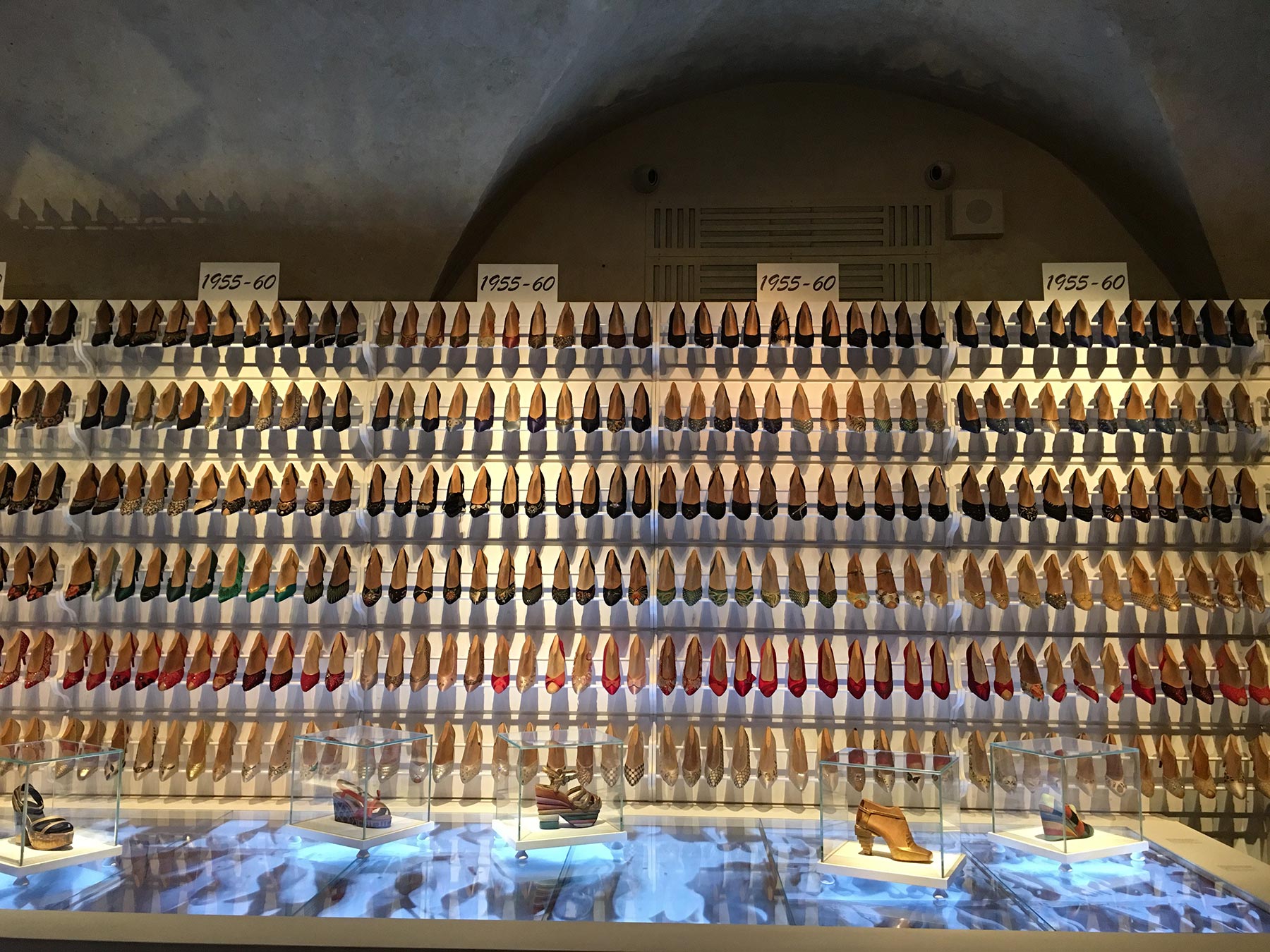
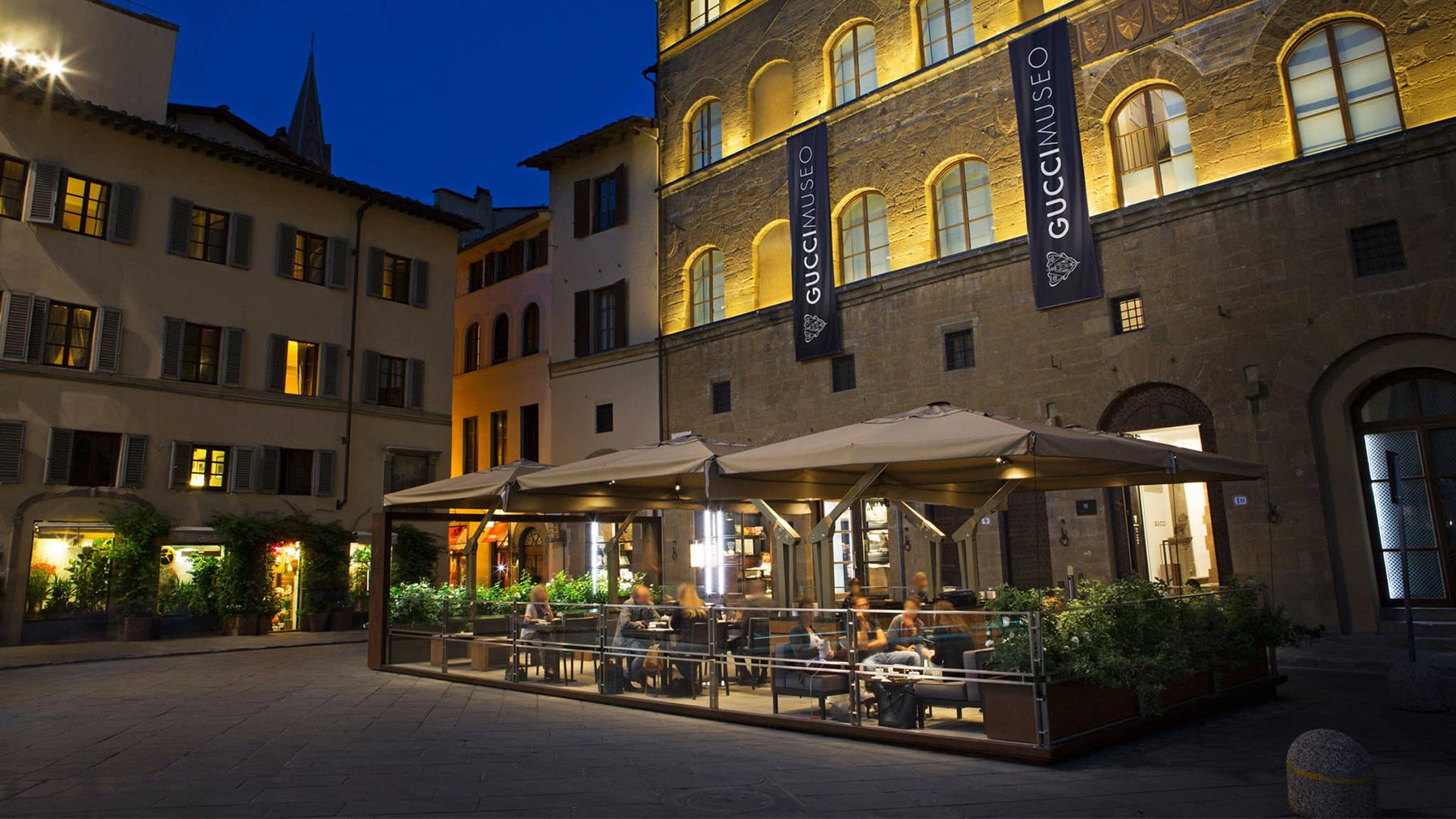
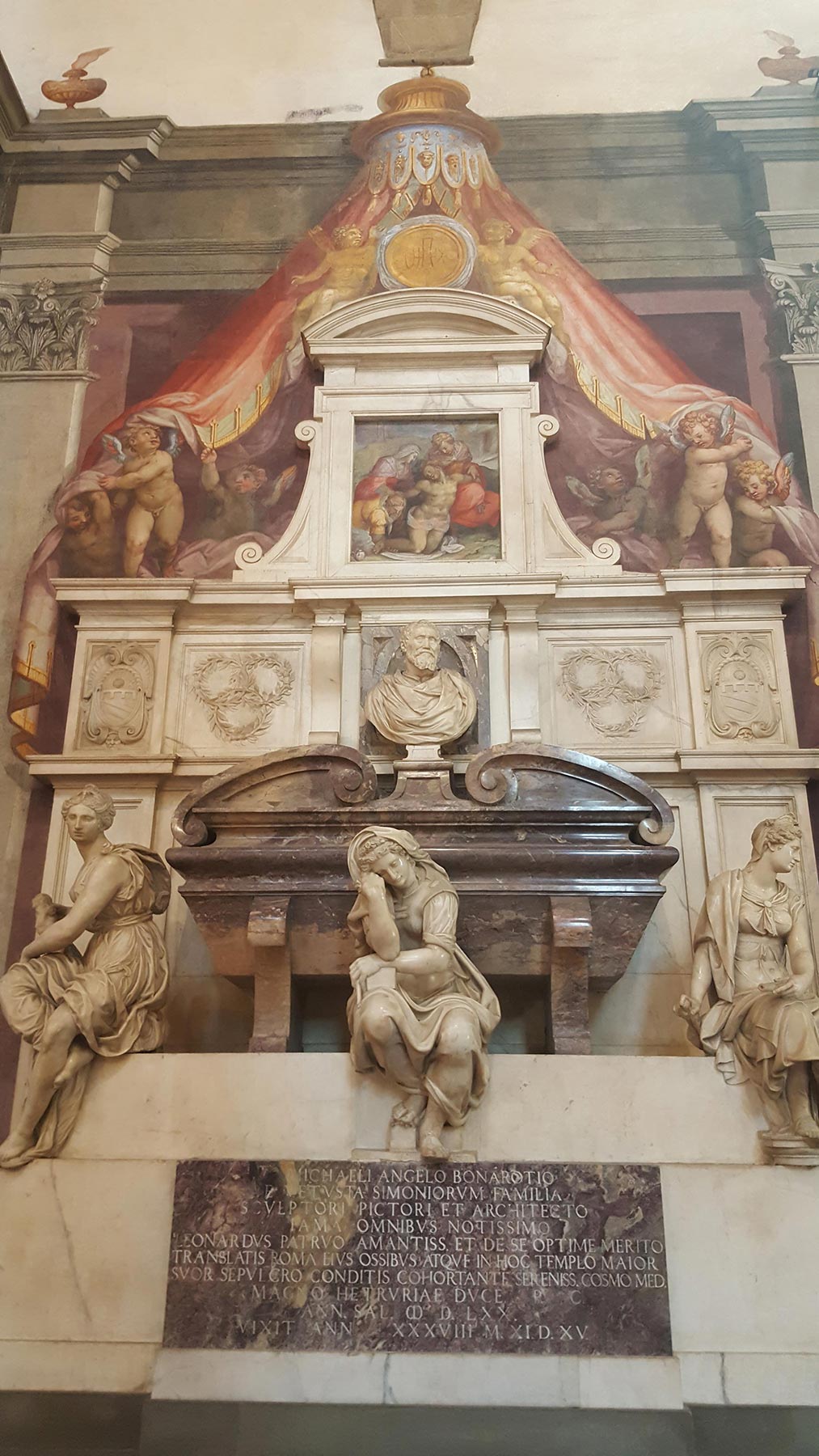
When you’ve had your fill of fashion I would pick and choose a few rooms of art at the Pitti – which is a task in itself as the museum is gargantuan. If time is short, do see the Titians and catch at least a glimpse of the royal apartments including Napoleon’s bathtub. Then head back across the Ponte Vecchio bridge to the Medici chapels where the beautiful new sacristy built by Michelangelo between 1520-1534 is a sight to behold. After all that, I for one felt it essential to visit the Church of Santa Croce, where Michelangelo is buried to pay my respects and say a reverent thank you for all the art he has blessed us with.
Santa Croce has a vibrant young scene and is dotted with small little restaurants which offer slightly different fare when you’ve overdosed on pasta and parmesan. I’d suggest girlinflorence.com for a blog of the best new eats around. I took her advice and tried out the small but perfectly formed Tehran restaurant in the centro strorico – yes I know, eating Iranian food in Florence is almost food blasphemy but it did serve the most buttery, rich and sophisticated Zeresh pulao with chicken that I’ve ever come across. For a more local treat try a gourmet foccacia or panini sandwich for lunch in one of the dozens of sandwich bars peppered around the city køb viagra. I seriously believe that the world’s best sandwiches are made in Florence; the bread is baked fresh, the meat fillings are of superb quality. And the flavours simple but divine. I had a wonderful turkey and mozarella foccacia with mushroom paste, chillies and salad leaves at All’ Antico Vinaio which has received over 8000 reviews on Trip advisor!
If you’d rather sit down and watch the world go by, Café Irene at the Savoy in Piazza Republica has great deals for lunch. My friend, Zainab Khaleeli swears by the quality of food at the hugely diverse Mercato Centrale and my Twitter friend @Hawkesbay speaks highly of the cafés on the opposite side of the river Arno in the Oltarno or San Niccolo area. But for a real treat you may want to dine in a silver Florentine workshop which transforms into a restaurant after dark. The large worktables are set with Pampaloni’s Due Sicilie silver cutlery and candelabra and the silversmiths don white gloves to serve you a gourmet dinner on communal tables where you can make friends quickly. Far more casual but equally friendly is La Cite, also on the other side of the river where you can listen to live jazz and pick a book off the shelves to read in the comfy armchairs. And do forget the calorie count (you’re on holiday!) and dive into Cafe Gilli for the most scrumptious sweet stuff in Florence!

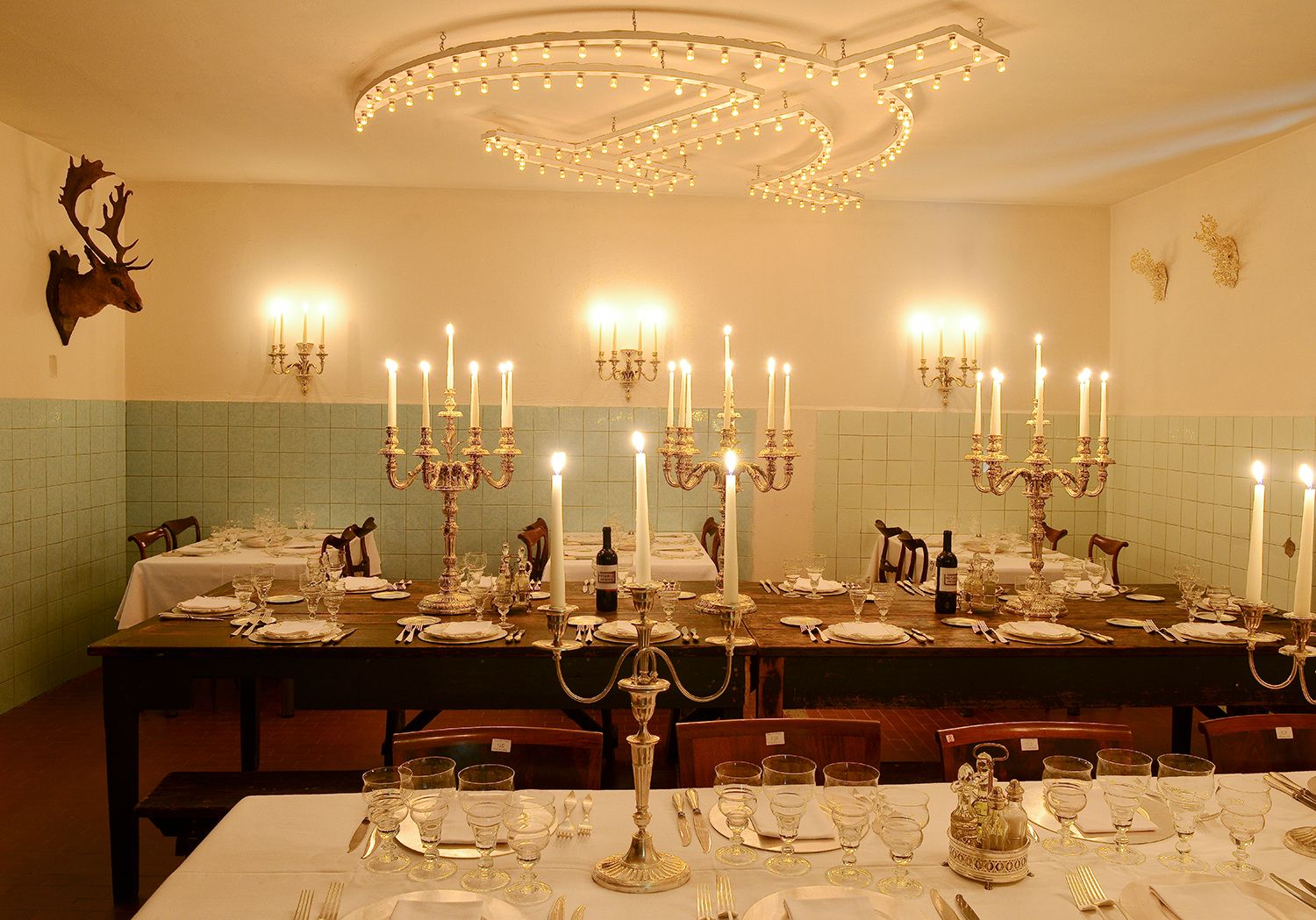

You may want to keep it for last, but I doubt you will be able to stay away from Florence’s most iconic sight for too long – every major street in the city seems to lead to the doorstep of the Santa Maria del Fiori cathedral or Duomo as it is more commonly known. Tuscan architect Arnolfo di Cambio began work on the main building and the campanile in 1296, but construction took almost 150 years and it wasn’t consecrated until 1436. Florence is not separated from its spiritual centre. The building seems integrated into city life and isn’t just something to gape at. Children are still baptised in the octagonal Baptistery on the first Sunday of every month. Most Fiorentini will pass by it several times a day, perhaps they may have even gotten used to its towering solidity, the delicate mix of white, green, pink and black marble in the inlay work. Perhaps the surprise of Brunilleschi’s terracotta cupola may have paled somewhat, but I doubt it. You can climb to the top of the dome and more adventurous friends of mine like the photographer Tapu Javeri have done it and recommend it highly for a bird’s eye view of Florence rooftops. But for those of us who may squirm at the tight staircase and dizzying heights the cupola looks just as good when on steady ground.
If you’re travelling alone try to get a hotel close by so you can just go admire this most beautiful of buildings a dozen times over. Every night, after I had traipsed around the city’s multiple attractions I would rest my weary bones at a table in the piazza and just spend hours watching the Duomo, reflecting on life, of loves, past and present and inhaling the Florentine air. For me the best time to see the Duomo is these late nocturnal hours, when the teeming crowds have abated and you can almost feel like you have the place to yourself. This is the time to admire the delicate inlay work of the beautifully lit Gothic building with its terracotta dome set against the darkened sky. I don’t think any human, religious or not, could ever tire of this sight. It assails the senses, it stimulates the mind. It makes you think of the possibilities that life can offer you.
It’s difficult to explain that feeling in words. You just have to go there.
